Exposing the Killer
By Dr. Mehmet Oz
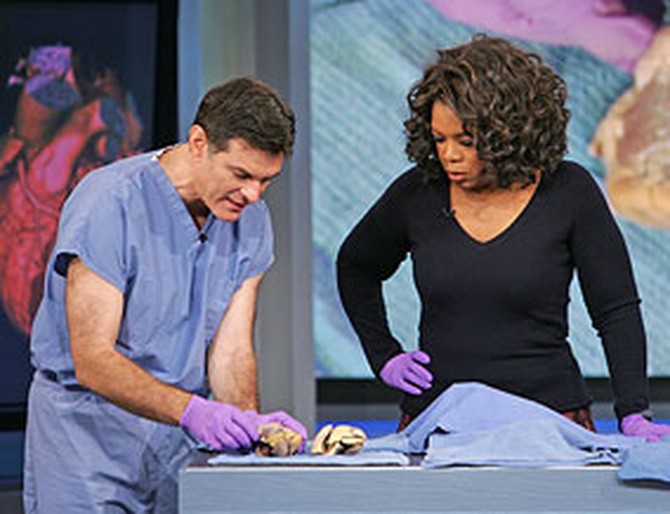
Here is one of the most disturbing, starkest statistics you'll read: one out of two women will die of cardiovascular disease.
"It's not just the heart," Dr. Oz explains. "You rust the arteries to the brain and the kidney. So that statistic means one of the two of you, odds are, will die of kidney failure, stroke or heart attack. There's a common cause: our modern lifestyle."
But there's always hope for turning things around. Dr. Oz has a simple suggestion. "Exercise to build heart health. What does that mean? That means we have to break a sweat 60 minutes a week. That's not a lot to ask."
"It's not just the heart," Dr. Oz explains. "You rust the arteries to the brain and the kidney. So that statistic means one of the two of you, odds are, will die of kidney failure, stroke or heart attack. There's a common cause: our modern lifestyle."
But there's always hope for turning things around. Dr. Oz has a simple suggestion. "Exercise to build heart health. What does that mean? That means we have to break a sweat 60 minutes a week. That's not a lot to ask."
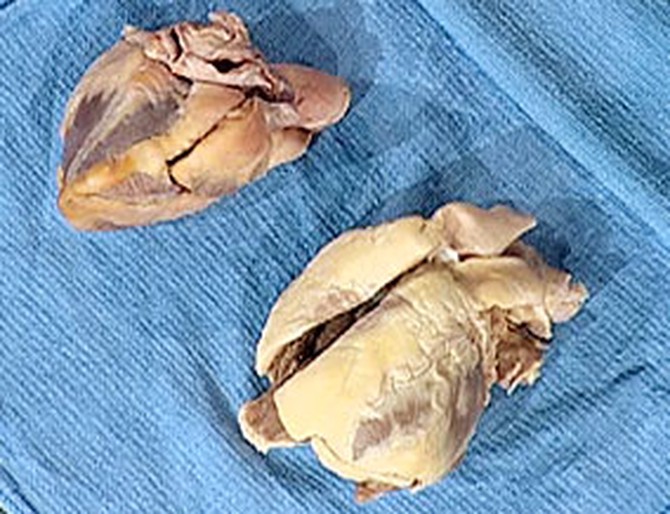
Two seemingly similar hearts lie under cloth number one. But, as Dr. Oz shows, you can't let outward appearances fool you.
Dr. Oz says that as big as a woman's heart can be in its emotional capacity, it's actually smaller than a male heart. The average female heart is only about the size of a fist.
In the first heart (left) Dr. Oz and Oprah examine, the blood vessels feel soft and supple, almost like angel hair pasta. But, the second heart (right) isn't so healthy. Just by touching the exterior of the heart, Oprah can feel a hardened section of the organ, which Dr. Oz explains is plaque.
Plaque can cause hardening of the arteries, and Dr. Oz warns that these internal issues may not be detectable in a normal heart scan. Everyday symptoms like belly pain and shortness of breath can be signs that your heart is in trouble .
"[The heart] is our most poetic organ," Dr. Oz says. "It's our internal metronome—from the moment you're 8 weeks of age in your mother's stomach, it's pumping for you."
Dr. Oz says that as big as a woman's heart can be in its emotional capacity, it's actually smaller than a male heart. The average female heart is only about the size of a fist.
In the first heart (left) Dr. Oz and Oprah examine, the blood vessels feel soft and supple, almost like angel hair pasta. But, the second heart (right) isn't so healthy. Just by touching the exterior of the heart, Oprah can feel a hardened section of the organ, which Dr. Oz explains is plaque.
Plaque can cause hardening of the arteries, and Dr. Oz warns that these internal issues may not be detectable in a normal heart scan. Everyday symptoms like belly pain and shortness of breath can be signs that your heart is in trouble .
"[The heart] is our most poetic organ," Dr. Oz says. "It's our internal metronome—from the moment you're 8 weeks of age in your mother's stomach, it's pumping for you."
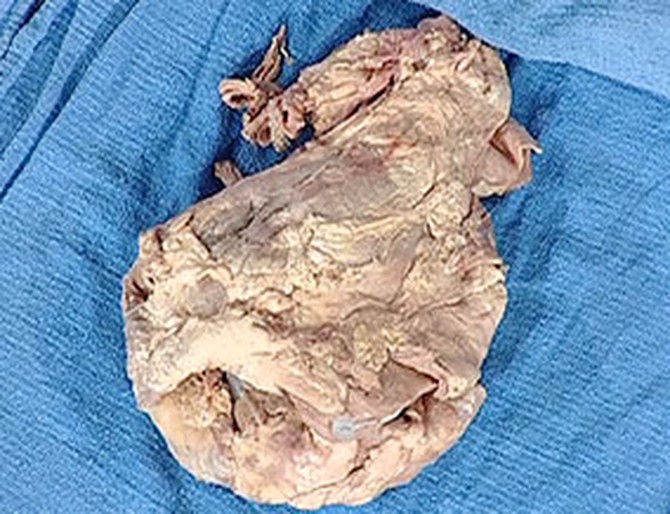
Dr. Oz says that it's important to spot the plaque early because closed arteries lead to heart attacks. Unlike the delicate organs under the first cloth, a traumatized heart looks like it's led a hard life. The heart enlarges to compensate for the heart attack, and by this point, it's too late to reverse the negative effects of an unhealthy lifestyle, Dr. Oz says.
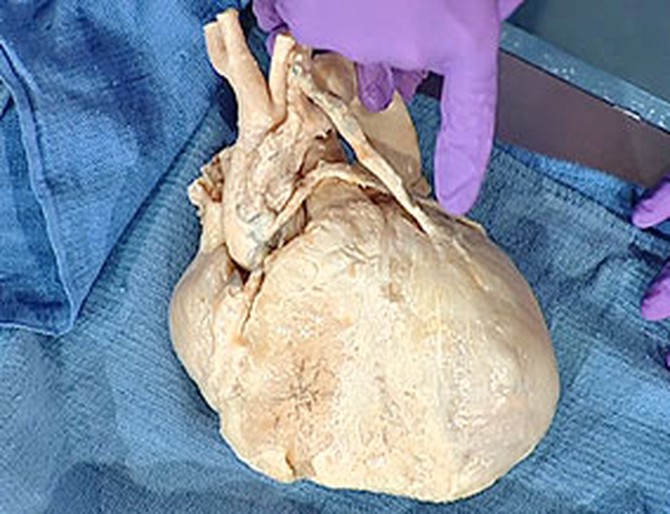
Many Americans have undergone bypass surgeries—including former President Bill Clinton—but do we really understand what's involved?
Dr. Oz shows Oprah how a heart transforms after undergoing a bypass. First, a bypass graft is placed on the heart to get past the blockage in the artery. The grafts are typically taken from veins in the legs.
"But the question is, is this as good as what you were born with?" Dr. Oz asks. "And the fact is, God gave you the arteries that you're supposed to have. Manmade imitations are never as good."
Dr. Oz shows Oprah how a heart transforms after undergoing a bypass. First, a bypass graft is placed on the heart to get past the blockage in the artery. The grafts are typically taken from veins in the legs.
"But the question is, is this as good as what you were born with?" Dr. Oz asks. "And the fact is, God gave you the arteries that you're supposed to have. Manmade imitations are never as good."

Dr. Oz has said in the past that a perfect aorta is nearly impossible to find , but he brought along two more examples to help show the progression from healthy to unhealthy.
Both aorta examples come from people around age 45. In the healthy aorta (left), the tissue is supple and the kidneys are nice and plump. But, in the second example (right), Dr. Oz points out plaque along the aorta. This plaque shows early signs of serious disease.
Eventually, if the disease worsens, a patient's kidney can become shriveled, and he or she may need a replacement. The aorta may also develop aorta chips, which are caused by plaque buildup.
"Plaque is just the first step," Dr. Oz says. "It's your warning sign—like someone saying, 'Help me!' And you've got to listen to that call because it will become like this [unhealthy aorta] and by the time it gets this far along, often there's been too much damage done."
Both aorta examples come from people around age 45. In the healthy aorta (left), the tissue is supple and the kidneys are nice and plump. But, in the second example (right), Dr. Oz points out plaque along the aorta. This plaque shows early signs of serious disease.
Eventually, if the disease worsens, a patient's kidney can become shriveled, and he or she may need a replacement. The aorta may also develop aorta chips, which are caused by plaque buildup.
"Plaque is just the first step," Dr. Oz says. "It's your warning sign—like someone saying, 'Help me!' And you've got to listen to that call because it will become like this [unhealthy aorta] and by the time it gets this far along, often there's been too much damage done."
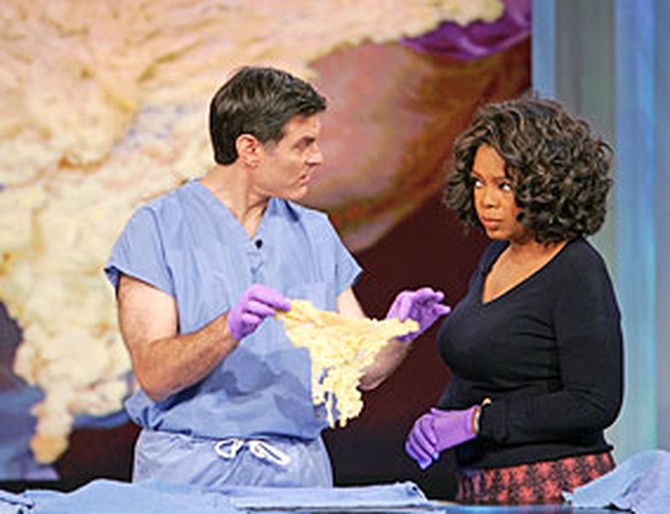
Dr. Oz has said in the past that a perfect aorta is nearly impossible to find , but he brought along two more examples to help show the progression from healthy to unhealthy.
Both aorta examples come from people around age 45. In the healthy aorta (left), the tissue is supple and the kidneys are nice and plump. But, in the second example (right), Dr. Oz points out plaque along the aorta. This plaque shows early signs of serious disease.
Eventually, if the disease worsens, a patient's kidney can become shriveled, and he or she may need a replacement. The aorta may also develop aorta chips, which are caused by plaque buildup.
"Plaque is just the first step," Dr. Oz says. "It's your warning sign—like someone saying, 'Help me!' And you've got to listen to that call because it will become like this [unhealthy aorta] and by the time it gets this far along, often there's been too much damage done."
Both aorta examples come from people around age 45. In the healthy aorta (left), the tissue is supple and the kidneys are nice and plump. But, in the second example (right), Dr. Oz points out plaque along the aorta. This plaque shows early signs of serious disease.
Eventually, if the disease worsens, a patient's kidney can become shriveled, and he or she may need a replacement. The aorta may also develop aorta chips, which are caused by plaque buildup.
"Plaque is just the first step," Dr. Oz says. "It's your warning sign—like someone saying, 'Help me!' And you've got to listen to that call because it will become like this [unhealthy aorta] and by the time it gets this far along, often there's been too much damage done."
Published 01/01/2006

